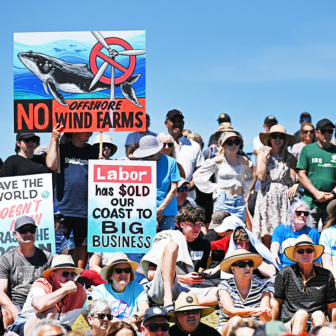IN March, environment minister Tony Burke asked a posse of concerned scientists from around the country to spend an evening with him in Canberra. On paper, the get-together was a chance for the minister to gain an insight into the scientific community’s view on proposed changes to Australia’s federal environmental legislation – known as the EPBC. But in practice… Well, it was all a bit odd.
The minister was asking thirteen boffins (plus four on speaker phone) for their take on the Hawke Review, a root-and-branch examination of the EPBC chaired by former defence department secretary Allan Hawke. The review’s recommendations (seventy-one in total) had been made public sixteen months earlier (December, 2009) and the final report contained 220 detailed submissions. Why would the minister want to consult further?
For the record, on the day the minister was in full Hillary Clinton mode: it was a Hawke Review listening tour. Unfortunately, not all the concerned scientists were entirely au fait with the matter at hand: many had simply thought a chance to be heard by the minister was too good to pass up. But for those who had been campaigning hard for the Hawke Review’s recommendations to be adopted by the minister, that meeting itself should have sounded alarm bells.
As we now know, the minister has decided to sit on the recommendations for another two years. That’s right; it will be 2012 before the government gets around to legislating changes to the EPBC. That led the usually circumspect Allan Hawke to provide this quote to Fairfax newspapers: “It is curious the government will take longer to respond to the review than it took a team of experts to investigate and write it.”
It is indeed a curious development. In my recent article on the EPBC’s uncertain fate for Inside Story, I highlighted what many experts in the field believe is the issue that lies at the heart of the proposed reforms: environmental assessments. Assessments are the process by which the federal government either approves or rejects large developments that have an environmental impact. In other words, it’s thanks to the EPBC that the minister can go toe-to-toe with development-dependent state governments. Assuming that’s what he wants to do.
The Hawke Review recommends something that the scientists have wanted for years: “strategic assessments.” What that means is that when considering the environmental impact of, say, a proposed shopping centre, it would no longer be enough simply to list the direct impact on fauna and flora. The broader ecosystem would have to be taken into account.
It goes without saying that developers hate environmental assessments – but there’s more to it than that. Within the department in Canberra there are those who fear strategic assessments could curb the minister’s ability to wield a big stick. The concern is that developers may learn to use the strategic assessments to their advantage – something that arguably happened in the recent expansion of Melbourne’s urban boundaries, where a strategic assessment was employed.
As a footnote to my original story, I submitted a Freedom of Information request to the department (known now as DSEWPaC – I occasionally ring their switchboard just to hear the receptionist say: ‘Hello, Department of Sustainability, Environment, Water, Population and Communities, how can I help you?’).
The response from DSEWPaC was that the 2001 pages I wanted would be mine for a mere $6074. The photocopying would cost me $200; search and retrieval time would amount to $559 – pricey, but perhaps do-able. But “decision-making time” would cost me a whopping $5,315.32. A deposit of $1518 was payable immediately. •




